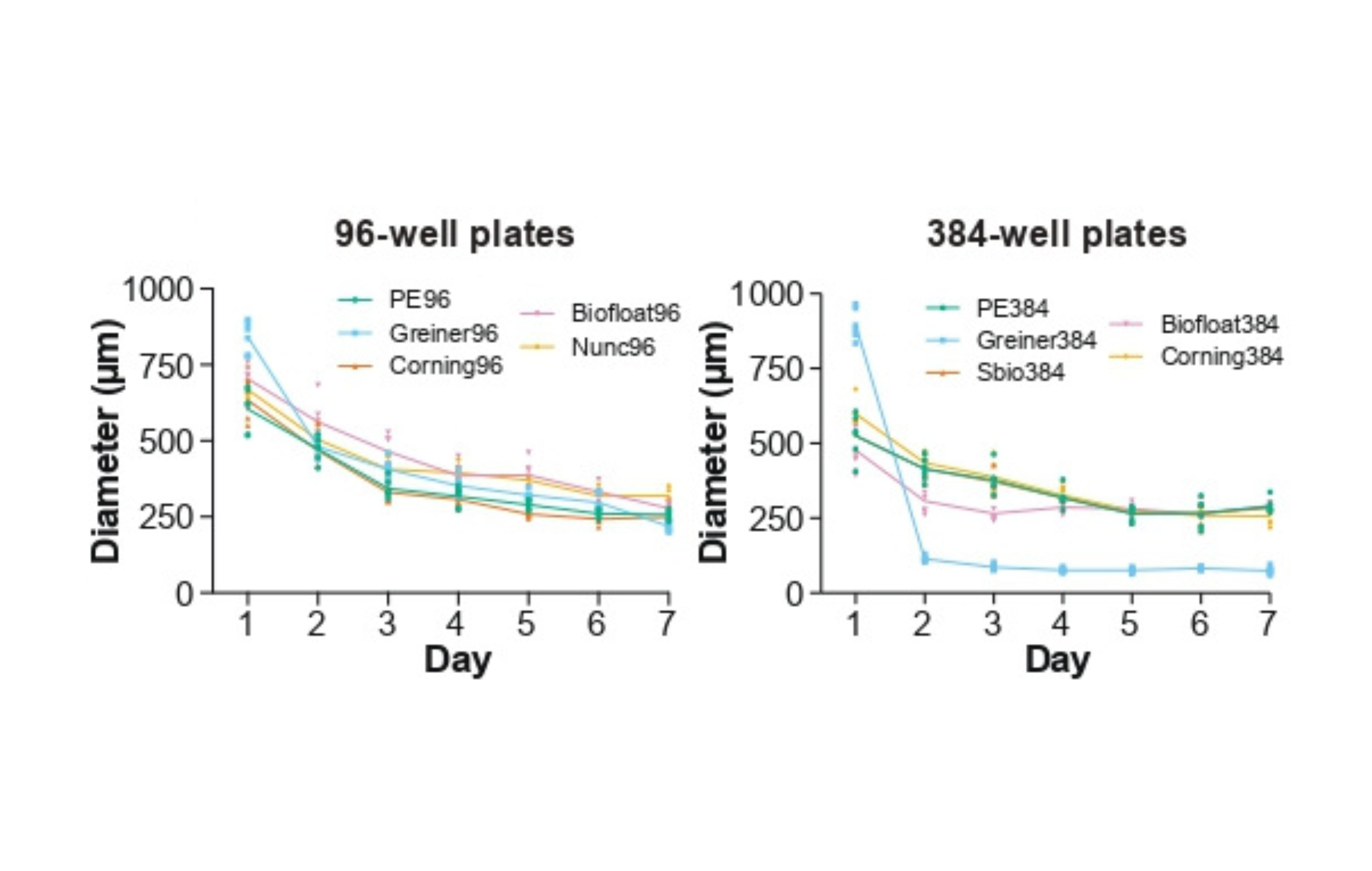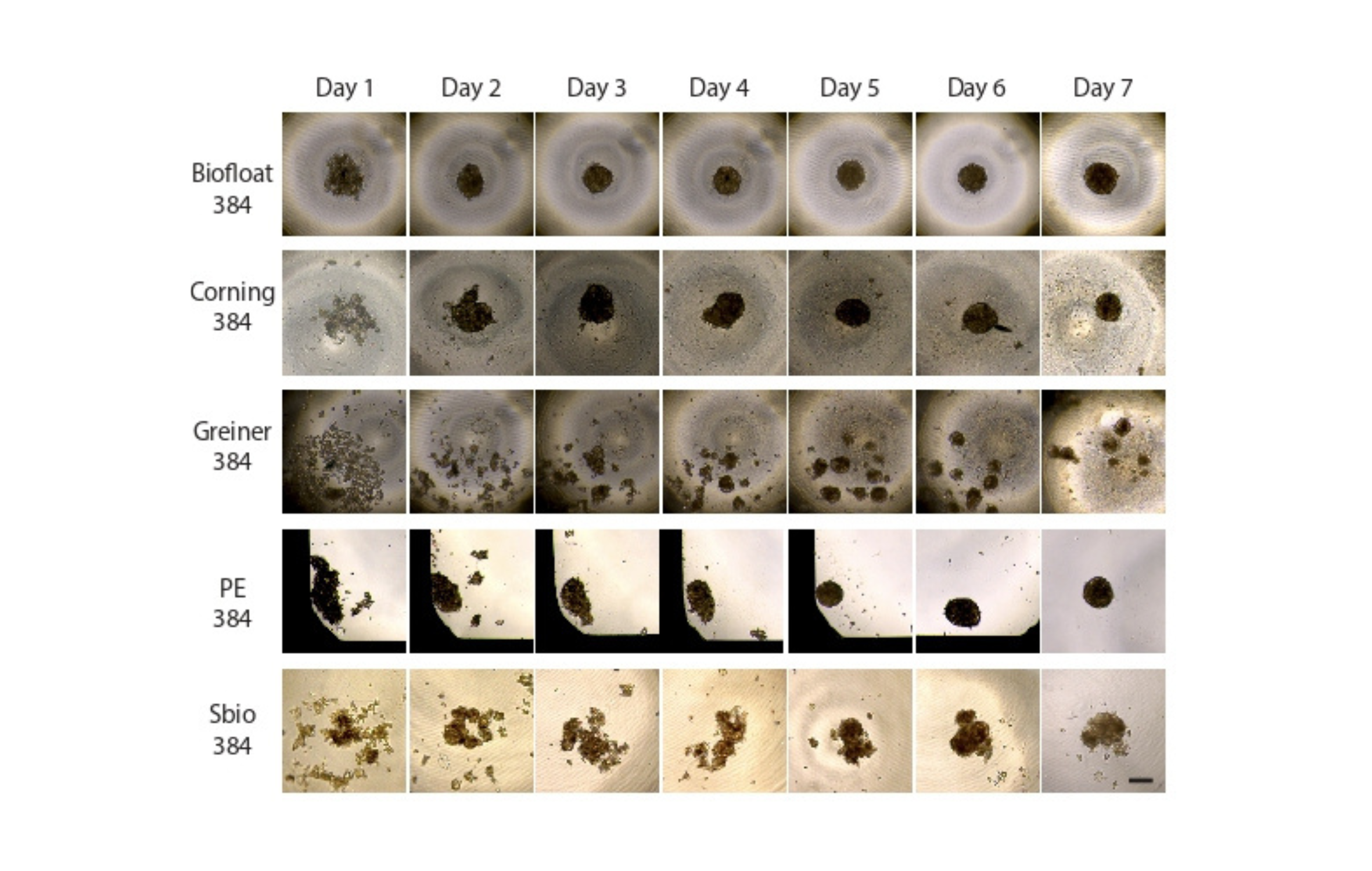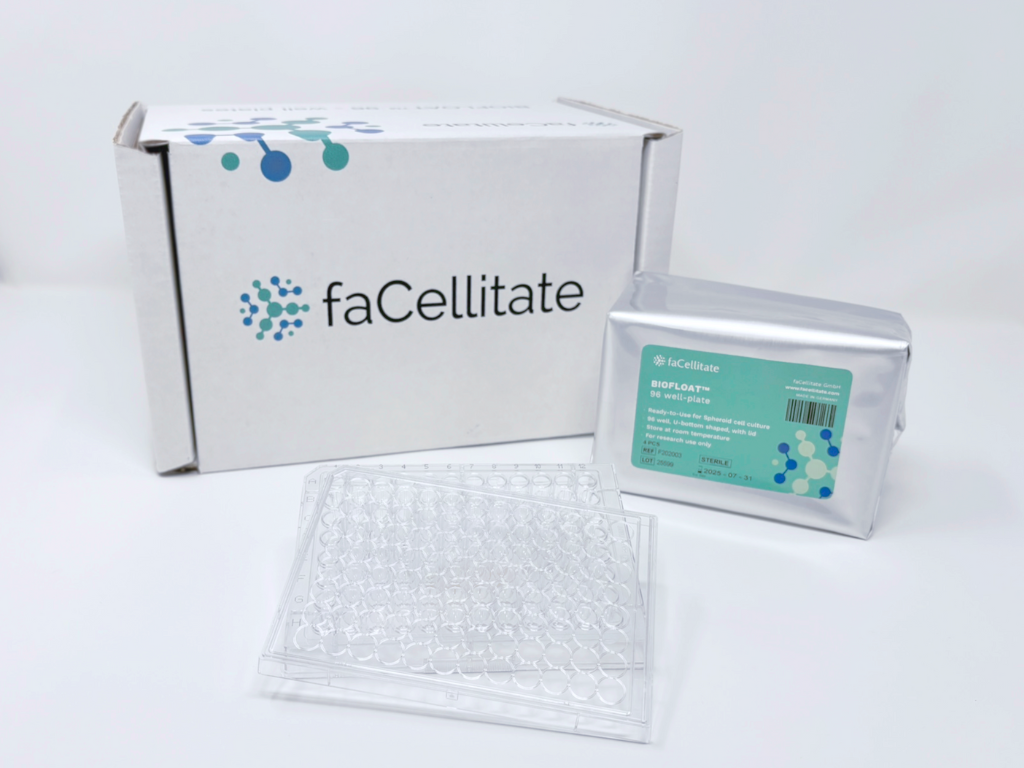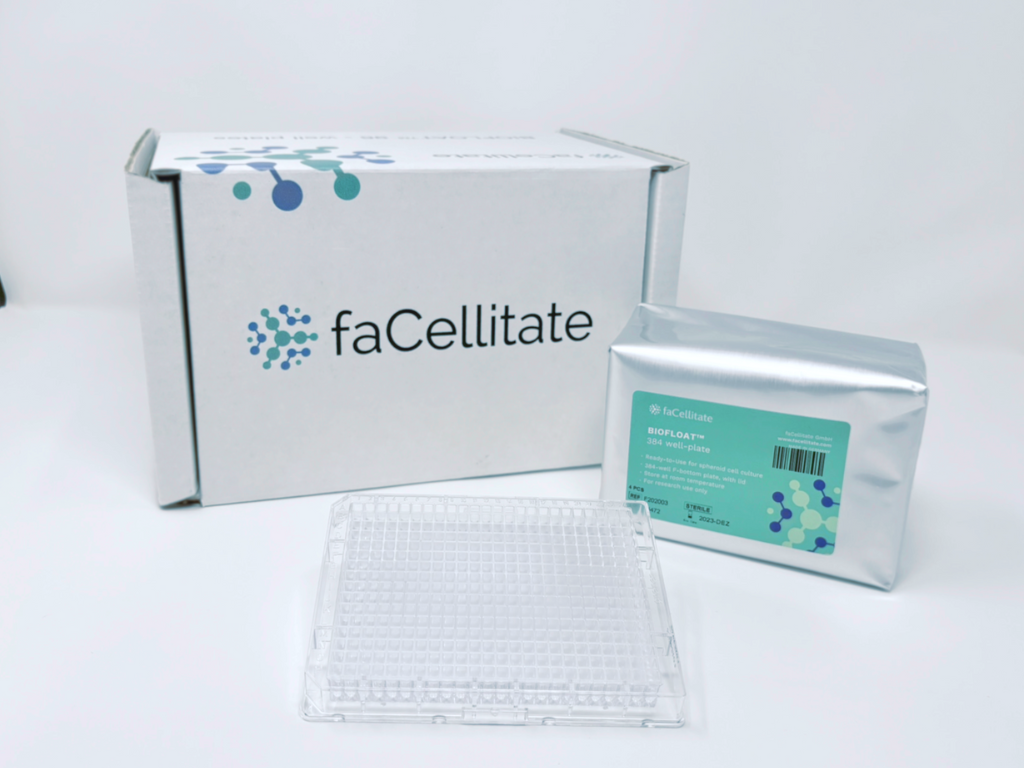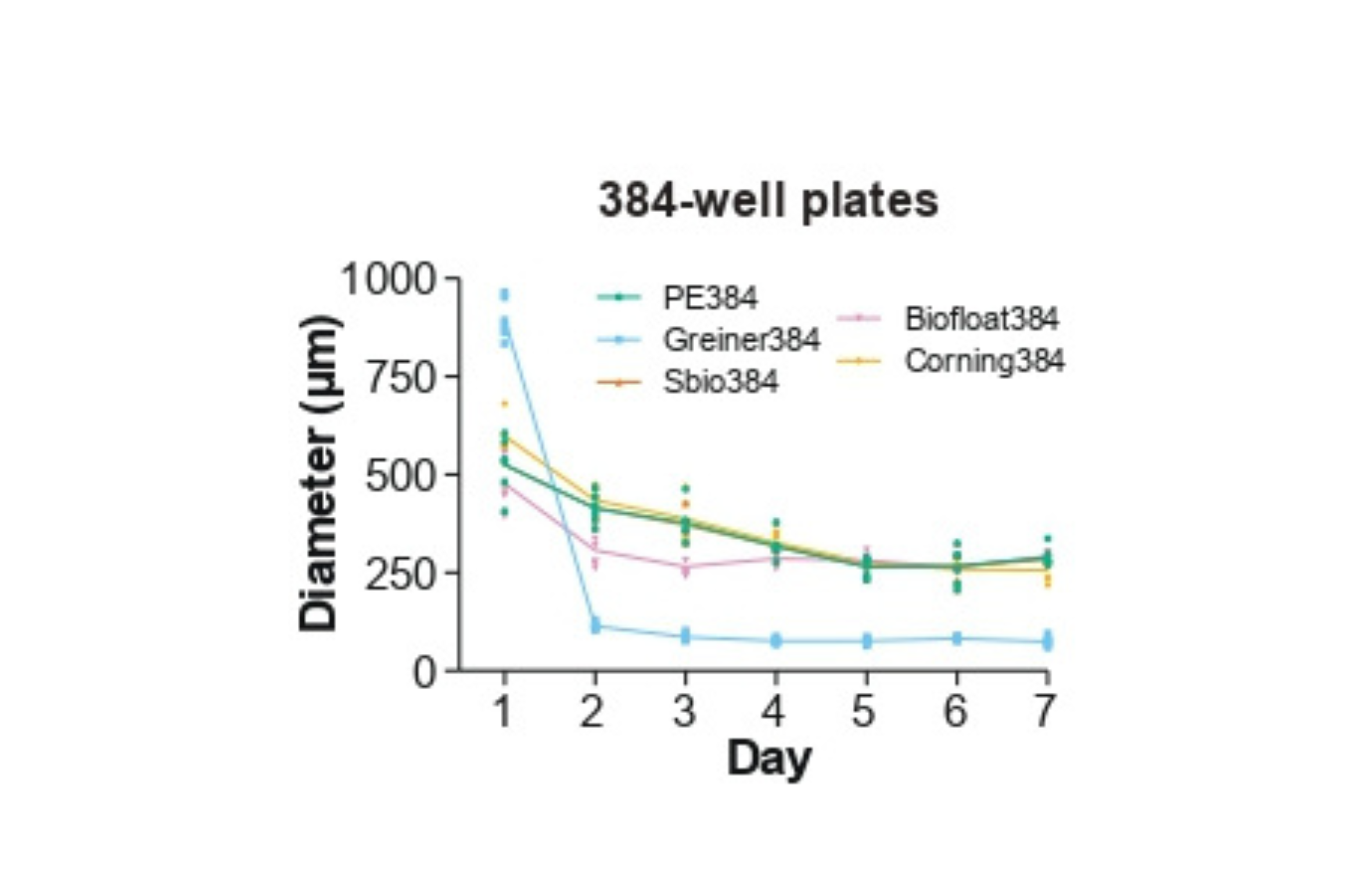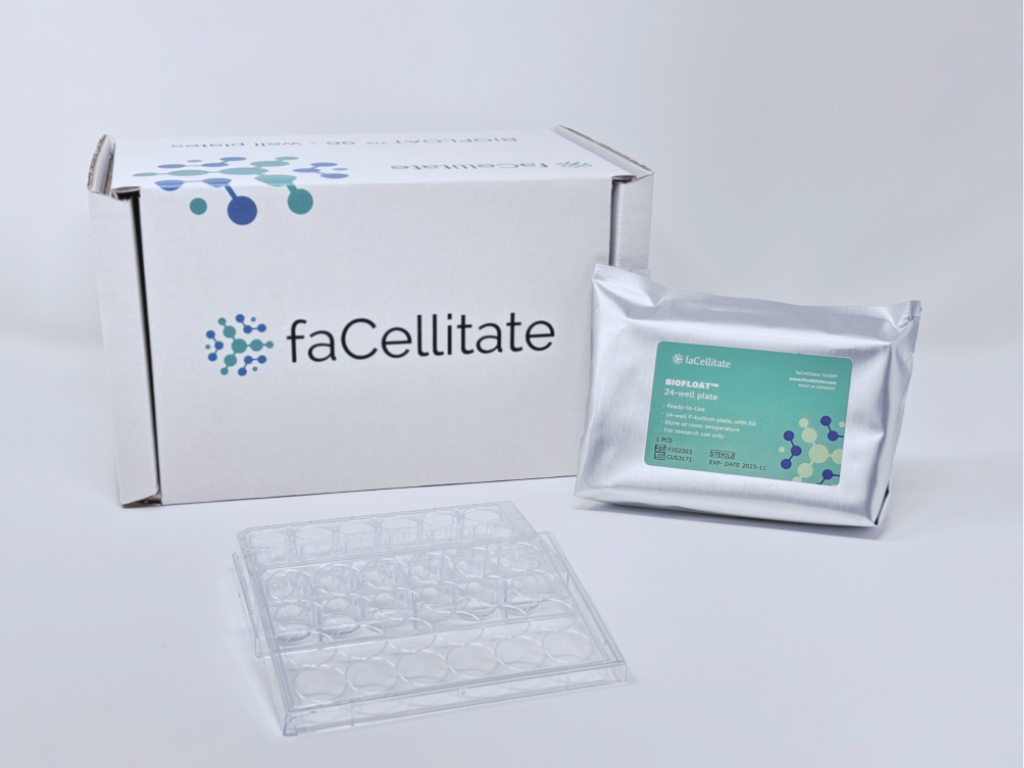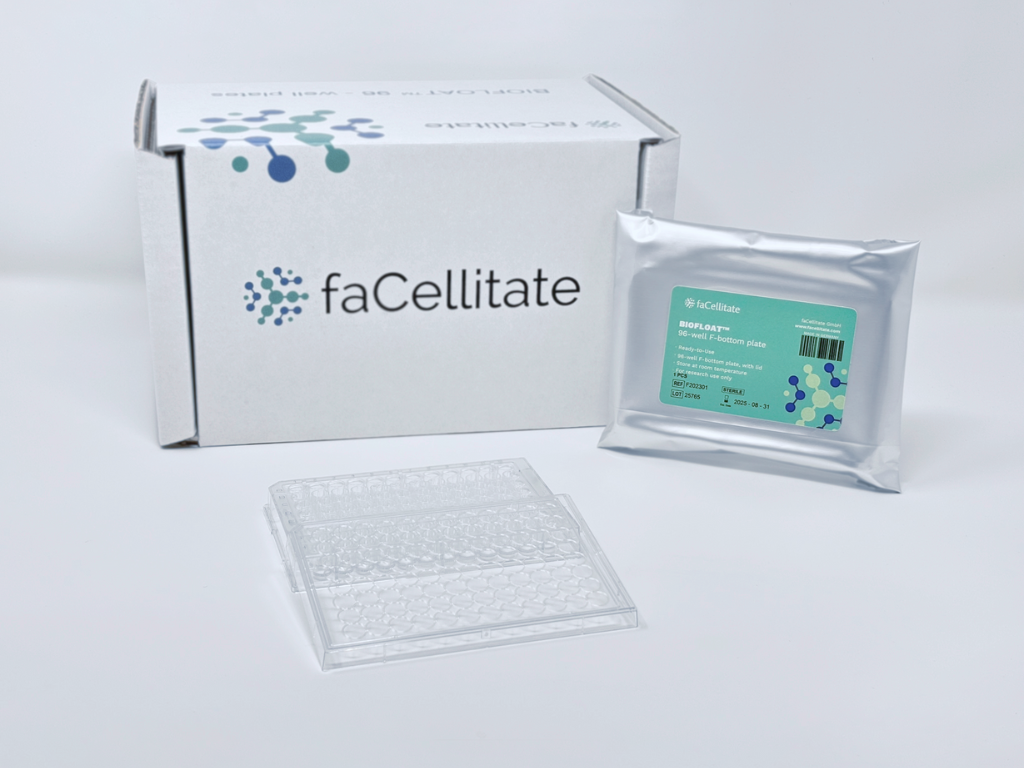The BIOFLOAT™ 96-well plate & BIOFLOAT™ 384-well plate have nanometer-thin uniform coating that supports spheroid formation even with cells that do not aggregate easily.
- BIOFLOAT™ plates enable rapid formation of spheroids from human primary hepatocytes.
- Spheroids exhibit unique characteristics: uniformity, vitality, and reproducibility.
- Key cellular properties are excellently reproducible with BIOFLOAT™ plates.
Following data have been recently published in the Biotechnology Journal as results of the study “The choice of ultra-low attachment plates impacts primary human and primary canine hepatocyte spheroid formation, phenotypes and function” conducted at the Karolinska Insitutet by the group of Prof. Dr. Volker M. Lausche.
BIOFLOAT™ plates allow for the rapid and reproducible formation of spheroids from human primary hepatocytes. Formed spheroids have unique properties in terms of uniformity, viability and excellent reproducibility of key cellular properties. Spheroids formed in BIOFLOAT™ are particularly well suited for High-throughput pharmacological and toxicological experiments.
The variability between different measurements of analytical parameters like metabolic enzyme activitiy is lower in spheroids formed in BIOFLOAT™ plates compared to spheroids formed in other ultra-low attachment plates.
Want to make sure BIOFLOAT™ 96-well is suitable for your cell culture?
We are confident in the quality of our products and you can also be convinced of this.
We invite you to try our 96-well plates to get perfect spheroids and organoids for your application.
Highly reproducible spheroid formation in BIOFLOAT™ plates
The authors observed 100% single spheroid formation of primary human hepatocytes only in BIOFLOAT™ plates among the tested 384-well plates.
-> BIOFLOAT™ plates are particularly well suited for high-throughput pharmacological and toxicological experiments.
Rapid spheroid formation in BIOFLOAT™ plates
The figures show considerably faster primary human hepatocyte spheroid formation in BIOFLOAT™ plates (3 days) compared to competitor plates (5 to 6 days).
BIOFLOAT™ plates are best suited for high-throughput pharmacological and toxicological experiments.
Metabolic active spheroids in
BIOFLOAT™ plates
In the benchmark study, primary human hepatocytes formed spheroids with high metabolic enzyme activity in BIOFLOAT™ plates.
BIOFLOAT™ plates showed the lower variability between different measurements of the same metabolite compared to competitor plates -> High data consistency and reproducibility.
Want to make sure BIOFLOAT™ 96-well is suitable for your cell culture?
We are confident in the quality of our products and you can also be convinced of this.
We invite you to try our 96-well plates to get perfect spheroids and organoids for your application.
![]() Cardiac myocytes
Cardiac myocytes
![]() Endothelial cells
Endothelial cells
![]() Primary hepatocytes
Primary hepatocytes
![]() Alveolar epithelial cells
Alveolar epithelial cells
![]() Neuronal stem cells
Neuronal stem cells
Want to create perfect uniform spheroids?
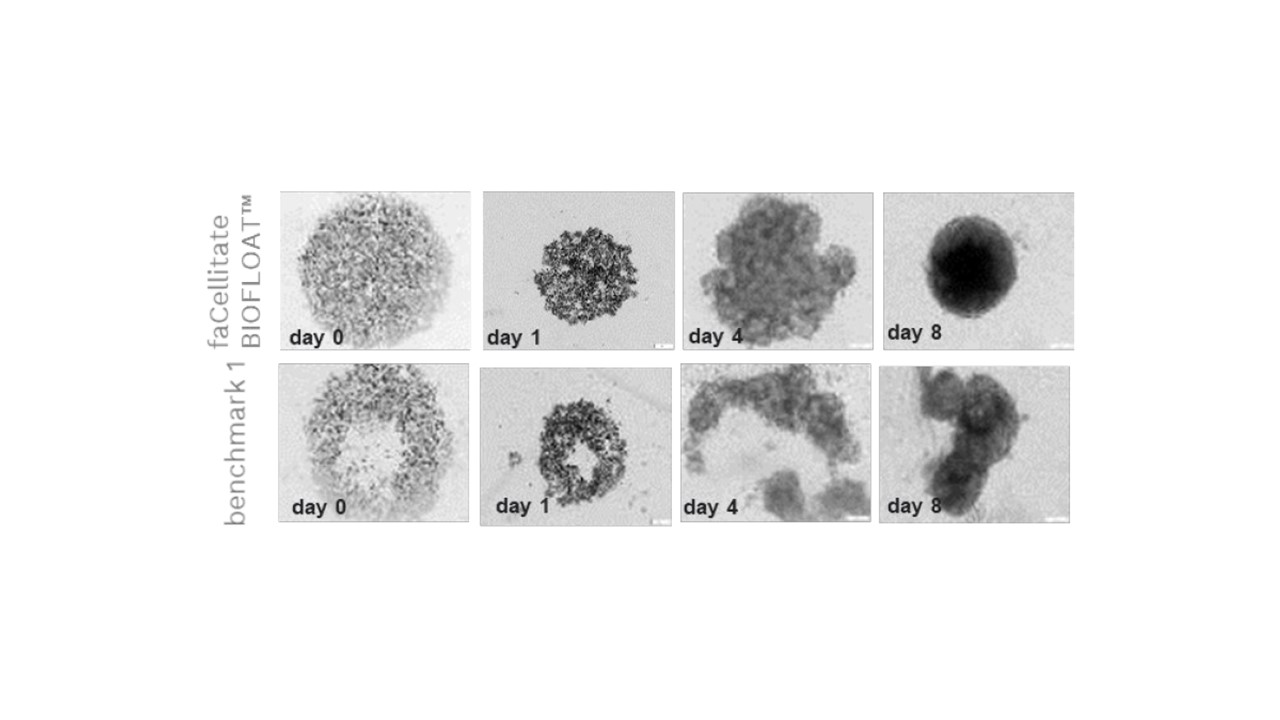
Rapid spheroid formation
Shorten your experiment timelines. Single spheroids form faster on BIOFLOATTM surfaces than on most other ultra-low attachment surfaces.
Round and Uniform
The 3D cell culture and maintenance on the BIOFLOAT™ surfaces result in highly uniform spheroids and perfect data consistency. Cell satellites and irregular aggregations are eliminated.
Reliable spheroid culture
The reliable quality of the BIOFLOAT™ surface makes it a premium product for spheroid and organoid culture, including cells which fail to generate spheroids on existing products.
The reliable quality of the BIOFLOAT™ cell culture surface enables the formation of perfect spheroids even for challenging cells. This also includes cells that do not form spheroids on existing products.

Cardiac myocytes

Endothelial cells

Primary hepatocytes

Alveolar epithelial cells

Neuronal stem cells
| Fibroblasts (M. musculus) Squamous cell cancer cell line (H. sapiens) Melanoma cell line (M. musculus) Colon carcinoma cell line (H. sapiens, Caucasian) Pancreatic adenoma cancer cell line (H. sapiens) Ovarian cell line (C. griseus) Epithelial breast cancer cell line (stem cell-like) (H. sapiens) Tumourigenic breast epithelial stem cell line from D492 cells (H. sapiens) Pancreatic cancer cell line (H. sapiens) Embryonic stem cells (S. scrofa domesticus) Pancreatic adenoma cancer cell line (H. sapiens) Lung adenocarcinoma cell line (H. sapiens) Breast cancer cell line (H. sapiens) Colon cancer cell line (H. sapiens) Primary dental pulp stem cells (H. sapiens) Pancreatic cancer cell line (H. sapiens) |
Immortalised osteoblasts (H. sapiens) Venous endothelial cells (H. sapiens) iPSC-derived hepatocytes Breast cancer cell line (H. sapiens) Pancreatic cell line (H. sapiens) Hepatic stellate cells/Ito cells (F norwegicus) Hepatic stellate cells/to calls (r. Sapiens) B-lymphocyte cell line from myeloma patients Immortalised astrocytes (H. sapiens) Differentiated fatty cell organoids from pluripotent stem cells Endometrial organoids from detached primary cells (non-human primates) Fibroblast progenitor cells (M. cerebralis) IPSC-derived cardiomyocytes (H. sapiens) Liver organoids (differentiated) (M. musculus) Neuronal stem cells (HN9 differentiated) Primary hepatocytes (H. sapiens, M. musculus, M. fascicularis, C. lupus famillaris) |
Raw Material Processing
The product does not use any rawmaterials of animal
or biological origin and therefore does not have TSE/BSE.
The polymer raw materials used for coating plates were positively evaluated
for quality consistency using GPC, GC-MS and NMR spectroscopy.
The sterile, non-pyrogenic/endotoxin-free, non-cytotoxic, DNase-/RNase-/DNA-free multi-well plates were coated using pipetting robots.
Coated plates were sterilized by electron beam irradiation


